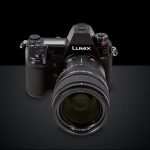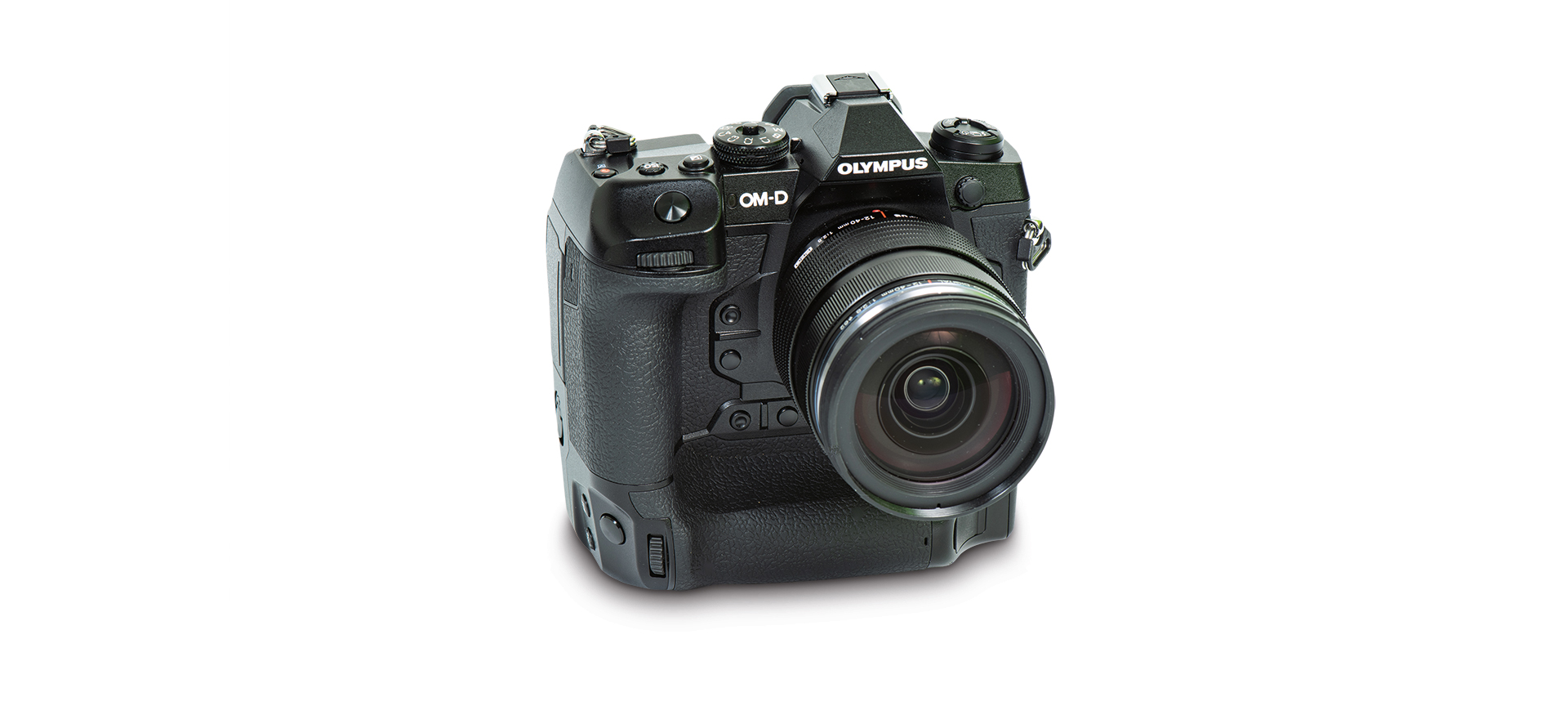
Olympus OM-D E-M1X test: rugged and ready
Posted on Mar 20, 2019
The OM-D E-M1X is a top-end Micro Four Thirds camera with an integrated handgrip aimed at action and nature photographers. However, this innovation-packed, high-performing camera is likely to have a much broader appeal
Last September, before all the rumours (about what turned out to be the OM-D E-M1X) started circulating, I had a one-to-one chat with an Olympus executive. Against the background of three full-frame system launches, I was obviously curious if Olympus would do a Panasonic – ie go full-frame while continuing its commitment to Micro Four Thirds. The short answer was ‘no’, followed by generous use of the word ‘mobility’ and its importance when it came to Olympus cameras.
So, now we have the OM-D E-M1X, with its integrated vertical handgrip – the biggest Olympus Micro Four Thirds camera we have seen to date. It is a rugged camera with, according to Olympus, world-leading dust, splash and freeze proofing, signalling the start of a new dynasty. Existing pro models like the OM-D E-M1 Mark II and optional HLD-9 vertical power grip continue to be available. So, reading between the lines, we’ll still see pro-level products with body and grip available as separate entities and more cameras with integrated grips. The latter will probably depend on the success of the E-M1X.
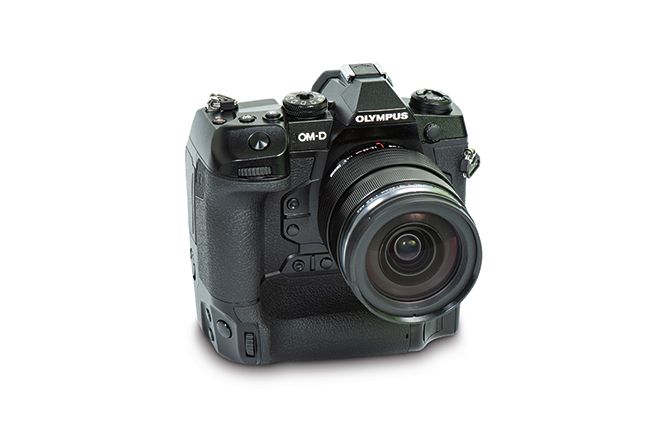
It is interesting the E-M1X and E-M1 Mark II share the same 20.4-megapixel sensor. Given the E-M1 Mark II was announced in September 2016, it is perhaps a surprise we didn’t see a new sensor in the new camera, maybe with more megapixels or much better high-ISO performance. It would, for example, provide a very clear user benefit to those using older cameras – an obvious reason to upgrade.
But that is not the case, so we have what we have. The E-M1X’s sensor does have an updated coating for improved light sensitivity and works with a pair of TruPic VIII processors. Having dual processors gives the E-M1X a faster performance in key areas: quicker start-up, faster recovery from sleep mode, support for two UHS-II SD card slots and features like Subject Detection AF and High Res Shot modes, including a handheld shooting option, in-body image stabilisation (IBIS) and Live ND.
The E-M1X integral grip means all the key controls for horizontal shooting are precisely replicated for vertical shooting, and that is a good thing. There’s also room to accommodate two batteries. The benefit of two batteries (it can run on one) is shooting capacity instead of shooting speed. Two fully charged BLH-1 cells allows for more than 2500 shots. I had three days with the camera and got the impression this figure was generous based on the 600-odd shots I took on each day. But then I was previewing a lot of my shots, exploring the menu a great deal and shooting quite a few shots using the High Res Shot modes – so perhaps not a true reflection of battery capacity in normal use.
The good news is the batteries can be charged via the camera’s USB-C socket using a power bank, with LEDs to indicate charging. I think USB charging should be made compulsory on all new cameras, because it is such a handy backup to have. Well done to Olympus for including it.
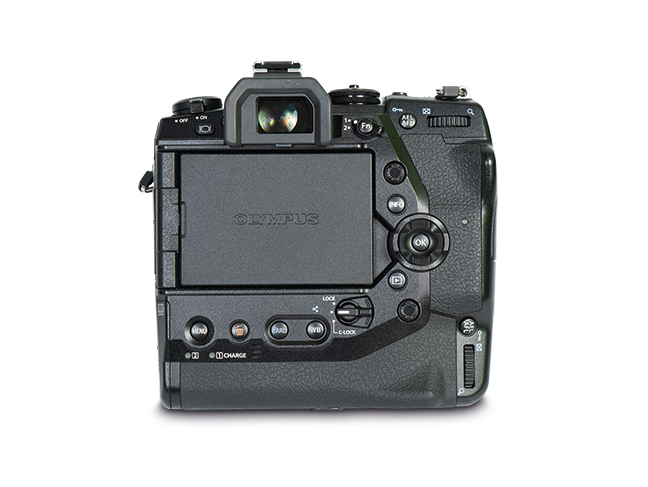
The E-M1X is a chunky-looking camera but there is nothing wrong, in my view, with the control layout. The on/off switch is on the left side, around the base of a control dial mode that has three function controls, drive/flash, bracketing and AF/AE settings. The dominant dial on the right is the lockable exposure mode dial, with four assignable custom settings plus the usual PASM settings and a movie setting. The remaining controls on the right are the movie record button, shutter release and, very usefully, the ISO and exposure compensation buttons. Having the compensation and ISO buttons next to the shutter release is ideal – the ISO button even has a dimpled finish so you can tell the difference by touch. It’s an unfussy layout and, along with input dials, front and rear, I thought handling was intuitive. The rear is dominated by the 3in touchscreen, which is surrounded by various buttons and controls. Push the menu button and you’ll see a deep menu structure, from A1 to J3, totalling 123 options. It is useful you can create your own menu comprising up to 35 separate items. As you would expect, there is plenty of customisation potential to set up the camera to your liking.
I was, however, a little perplexed by the inclusion of a card button. With dual slot cameras, I have all images saved to both in case of card failure. That’s it. Touch wood, I have not had that particular experience, but that is my set-up. Very rarely have I had to decide to save to one card or the other, but that is what Olympus has dedicated a button to. I would understand it much more if the card button let me, on those rare occasions I felt the need, save Raws to one and JPEGs to the other, or change my saving options, but it doesn’t. Those options are available through the menu H1 Card Slot settings, but perhaps that will change with a firmware update.
You do need fast C SD cards to benefit from the E-M1X’s dual processors, which have enhanced shooting speeds. UHS-II SD cards can be identified by their two rows of electrical contacts. The camera can capture Raws at 60fps with exposure and focus locked, and shoot up to 18fps with AE/AF tracking. With the dual processor and fast cards, at 10fps you can shoot 280 Raws in a single burst with AE/AF tracking and no buffering. At 15fps, this drops to a burst of 148 Raws without buffering.
I didn’t get to truly check out the camera’s action shooting prowess in the time I had the camera – even the ever-dependable horse racing was off – so I made do with the nearest motorway. I certainly didn’t manage to get to the point of buffering, and I’d imagine the figures quoted by Olympus would be more than enough frames for all but the most enthusiastic machine-gunners.
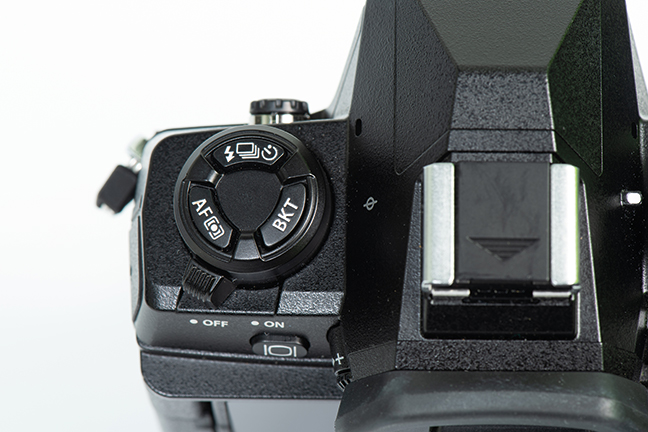
There is significant innovation in the camera’s AF department. The 121-zone AF system offers plenty of set-up options, with the choice of single zone (large or small), five, nine, 25 and all 121 working. The single and zone options can be moved around the whole 121-zone layout and each pattern can be scrolled through by pushing in the AF joystick and using the front input dial. Aside from a focus joystick to move AF points around, the four-way rear control pad can also be used. If that wasn’t enough, you can also use the touchscreen, whether your eye is up to the viewfinder eyepiece or not.
There is even more potential in the A2 AF/MF menu under the item Target Mode Settings. Here, you can make your own custom AF grid using the 11×11 121 zone to suit the subject. So, you can choose a 1×9 AF pattern to photograph a tall, thin subject (a giraffe!) for example, or you can go for a horizontal 3×8 AF grid to deal with boats. Your custom grids can be added to the default list of AF patterns to scroll through.
For most users, the single point or small zone options would be more than enough, but the potential is there for more specialist users and their subjects.
Speaking of specialist subjects, the E-M1X’s menu item A3 AF/MF has a Tracking Subject option, where there’s the choice of motor sports, trains or aeroplanes for continuous AF tracking.
I tried the aeroplane tracking mode on commercial jets in the absence of anything faster and the motor sports mode on cars joining a motorway, both using the Olympus 300mm f/4 lens. Neither subject was ideal in the context of what Olympus had in mind for this feature, but it was the best I could manage in the time I had.
In both cases, you could see the focus zones picking on the subject, but I could see zones missing, too. It is an interesting concept, but I would have thought pro shooters would prefer something more controllable and predictable and stick with single or a small zone – or use their own pattern produced with the Target Mode option.
AF was generally responsive, quick and sensitive in low light. It struggled a little on high-frequency subjects. It was more twitchy on bird feathers, for example, but most systems would probably struggle.
In better light with subjects with more contrast, AF was impressively slick and accurate, locking in with very few issues. I tried various modes, but stuck mostly with single point or small zone – and those modes delivered time after time.
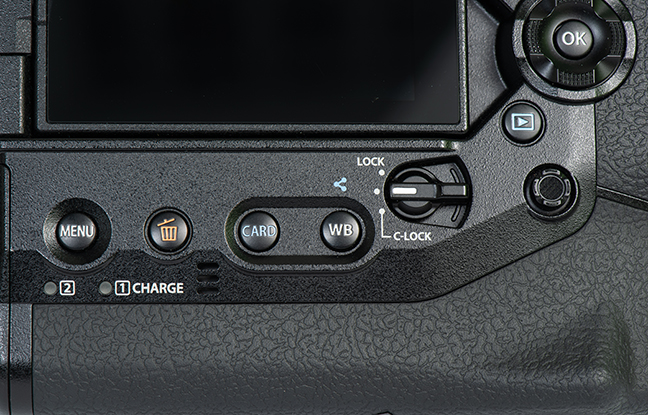
In-body image stabilisers (IBIS) help you get sharp stills and video, so are very much a good thing. See Performance: IBIS system (below) for more on the E-M1X’s shake-defeating skills. A really handy benefit of IBIS is the ability to capture even more from a suitable scene.
Olympus’ High Res Shot mode – seen on the E-M1 Mark II and E-M5 Mark II – merges eight separate exposures into one for a high megapixel file. Between each exposure, the sensor is moved by a pixel or half a pixel, so you get much more data from a Bayer sensor, with its two green, one red and one blue pixel array.
The E-M1X has High Res Shot (HRS) mode with two options: Tripod HRS and Handheld HRS modes. With Tripod HRS mode, the camera takes eight sequential shots with its electronic silent shutter. In low light, this means the exposure sequence can be several seconds. In this mode, Raws are 10,369×7776 pixels (80 megapixels) and JPEGs 8160×6120 pixels (50 megapixels). This compares with normal Raw/JPEG shooting, where the file size is 5184×3888 pixels, ie 20 megapixels. You are limited to a top ISO of 1600 and the smallest aperture is f/8. And, of course, you need a stable camera and scene that is static.
Handheld HRS mode gives Raws and JPEGs of 8160×6120 pixels (50 megapixels), so still much larger than usual. In this mode, up to 16 separate exposures are taken, with the IBIS gyro and camera’s dual processors correcting for any camera movement between each shot. Then the images are merged.
The camera locks up during the merging process. It takes about 12-15 seconds for Handheld HRS, a few seconds longer than Tripod HRS.
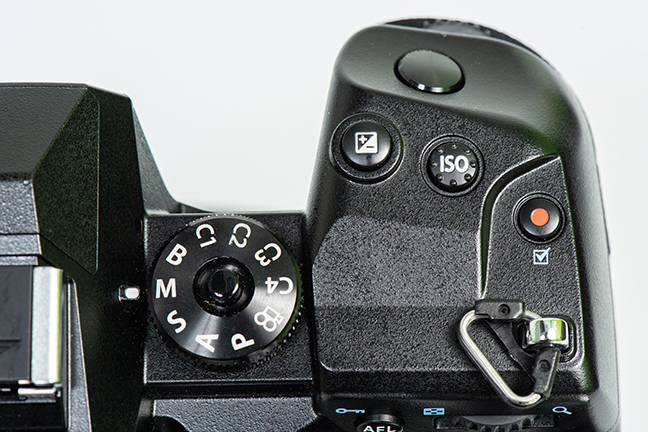
Because the slightest camera or subject movement of even a pixel will ruin a Tripod HRS image, there is a selectable time delay between pressing the shutter button and the beginning of the exposure. This ensures the camera has fully settled down by the time the exposure sequence begins.
In Handheld HRS, IBIS detects shake and merges stabilised images, so you can have the shutter release behaving as normal – or perhaps with a brief time delay – before the camera starts shooting. You can see the IBIS system working when you take Handheld HRS shots.
For flash shooting, a time delay can also be set between each exposure to allow for flash recycling.
I tried Tripod High Res Shot mode to assess the benefits and also tried with Handheld HRS to check out the practical issues. See the accompanying panel and images to see how the OM-D E-M1X’s HRS performed.
Performance: ISO
The test shots here were taken with an OM-D E-M1X fitted with a 12-100mm f/4 lens. The camera was fixed to a Novo Explora T20 tripod and shots taken with the self-timer. No in-camera noise reduction was applied, nor was any used in processing. We did try Adobe Lightroom /DxO PhotoLab to check out the potential benefits of noise reduction.
The E-M1X showed itself to have a capable digital noise performance, even though its sensor, which is the same as used in the OM-D E-M1 Mark II, is not the latest. You can see noise start appearing in areas of even tone at ISO 500, although some noise reduction software will get rid of that. The grain effect of noise is more evident at ISO 800 and gets progressively more obvious through to ISO 3200, especially in areas of plain tone and shadows. With some diligent noise reduction, top-quality images suitable for critical use and big prints are achievable.
Venture beyond ISO 3200 and images are less recoverable in terms of noise reduction, but results are still okay until ISO 6400 and beyond, where noise and its impact on fine details becomes more significant.
All in all, the E-M1X’s sensor is capable, given its age and the small Micro Four Thirds format.
Click the images to see a larger view
Performance: Exposure latitude
This set of OM-D E-M1X Raws was manually bracketed from the correct meter reading of 1/125sec at f/11, ISO 200. The bracketed shots were exposure corrected in Adobe Lightroom Classic CC.
The -1EV and -2EV shots recovered well and look tonally spot on and colour cast free, with some acceptable noise visible in the shadows. The -3EV and -4EV shots also look tonally fine after exposure adjustment, but digital noise is more evident in the shadows and mid-tones, and intricate details suffer. For high-quality results, the underexposure limit is -2EV.
With overexposure, +2EV is the limit. The corrected +1EV and +2EV shots look great, with crisp highlights full of details, excellent tonal balance and not a trace of any noise.
The +3EV shot is also artefact free, but the strong highlights are burnt out and could not be recovered at all.
The exposure latitude of E-M1X Raws where quality is critical is +2EV and -2EV, which is good, but not the best around.
Click the images to see a larger view
Performance: High Res Shot modes
High Res Shot mode gives you the chance to shoot bigger files with more detail and minimise noise. The E-M1X has Tripod HRS to give 50-megapixel JPEGs and 80-megapixel Raws. In Handheld HRS, you get 50 megapixels in both file types.
The four pictures here were taken with a 12-100mm lens using exposure settings of 0.8sec at f/8, ISO 100. The out-of-camera JPEGs have been sharpened by the camera, while unsharp mask was added to the Raws in Adobe Photoshop.
Click the images to see a larger view
The pub interior below was shot handheld with a 12-100mm f/4 lens at 1/4sec at f/4, ISO 200. Both were processed in Lightroom with unsharp mask added in Photoshop.
With the Handheld HRS shot viewed at 100% and the normal Raw viewed at 157%, identical subjects are the same size on screen. Both images viewed at 100% showed how effective Handheld HRS proved to be, even with a relatively slow exposure. Noise levels are significantly lower, too.
To demonstrate the noise-reducing benefits of using Tripod HRS, a series of comparison shots were taken from ISO 200 up to ISO 1600 – the maximum allowed by the mode. The exposure for the shots was 1/4sec at f/8, ISO 1600.
Tripod HRS shots are twice the size of normal Raws, so shots were checked out at the same subject size and also at the same magnification. Either way, the benefit of Tripod HRS on noise performance was significant and obvious.
Performance: IBIS system
The E-M1X’s five-axis IBIS system features a new gyro and uses the dual processors to give an even better stabilisation performance. The claim is there’s a 7.5EV benefit to using the 12-100mm f/4 lens at 100mm. This is the 35mm equivalent of 200mm, so if we generously assume 1/250sec is the minimum handheld shutter speed, then a 7.5EV benefit is 0.7secs, i.e. between 1/2sec and 1sec. Handholding to get sharp shots at such shutter speeds with the 35mm equivalent of 200mm would be impressive, so I did some indoor and outdoor testing. It has to be said that the IBIS system does a great job.
Based on my little test, Olympus’s 7.5EV claim is justified, but of course, as always, there are many variables when it comes to handholding. My test shots were done after a full day’s shooting and a lunch with wine. I still got great results at silly slow shutter speeds. That’s impressive.
Click the images to see a larger view
Performance: Focus stacking
Focus bracketing and focus stacking (with compatible lenses) are available on the E-M1 Mark II and E-M5 Mark II. With stacking, eight exposures are shot and merged. On the E-M1X, you can choose between three to 15 separate exposures to produce the merged JPEG file. If you have Raw and JPEG image quality set, you have individual images saved in both formats so you can focus merge in software in post-production.
In this example, a 12-100mm f/4 lens at 70mm was used with an exposure of 0.4secs at f/4. The 15 shot option was chosen, with a focusing differential of 5. This was my first focus stack with this camera, so I picked 5 on the simple premise that it was in the middle of the range.
I started by focusing on the lid of the top box about 30cm from the camera and framed up with the subject well inside the frame outline in the viewfinder. You can see from the finished stacked image that it is bigger in the frame compared to the starting images. I pressed the shutter button and let the camera do its thing.
Looking at the JPEGs afterwards, I noticed the first shot was sharp on the lid, then the camera focused even closer before racking out towards infinity. The final stacked result looked spot on.
Click the images to see a larger view
Verdict
There is much to admire, enjoy and exploit in the Olympus OM-D E-M1X. I was rather taken with the Handheld High Res Shot mode. It’s not a mode to use all the time – it wouldn’t suit most subjects anyway – but in the right situation and when a big file is needed, it works remarkably well. It still needs to be used with care, but when it worked, it worked very well indeed.
There’s plenty more good stuff. The potential benefits of the 121-zone AF system are clear, the continuous shooting capacity is impressive and the vertical grip is great in use. And there’s the issue of mobility. The camera is not compact by any means, but look at the lens system. The 300mm f/4 (600mm equivalent in the 35mm format) is a pure delight, so there are plenty of advantages when it comes to lugging a long lens E-M1X outfit around.
As for price, the E-M1X body is £2799 , which is competitive in the world of pro, deep-bodied cameras, but then you can buy the E-M1 Mark II with the HLD-9 grip for £1648 – over £1000 less. Of course, they offer different things, but it is a comparison some people will inevitably make.
By the time you read this, stocks should be in the shops, so we’ll have a better idea of how this latest Olympus will be received by the person who matters most: the customer. But there’s no denying it’s a very capable camera with massive potential.
Pros: Build quality, handling, IBIS, High Res Shot mode, customisible AF patterns, produces sharp, correctly exposed images reliably
Cons: Big for an MFT camera, fixed grip won’t suit everyone, same resolution sensor as E-M1 Mark II
| Features | 23/25 | No new sensor, but great features like Handheld High Res Shot |
| Handling | 24/25 | Suited my hands and handling needs very well |
| Performance | 23/25 | Excellent with exposures, AF more than competent, lovely results |
| Value for money | 21/25 | You get a lot of camera for your money – but £2799 is a lot of money |
| Overall | 91/100 | The E-M1X is a great way for Olympus to kick off its centenary |
For more information on the Olympus OM-D E-M1X, visit the Olympus website.
As featured in Photography News, issue 64.





























